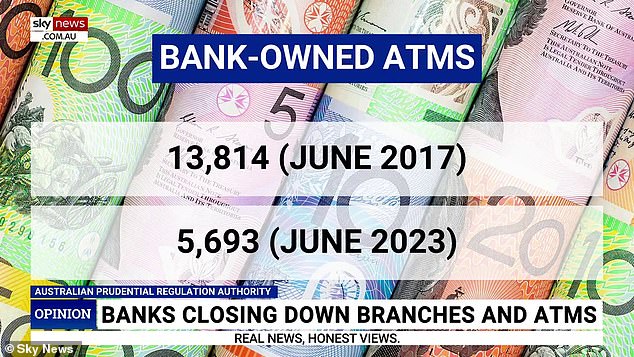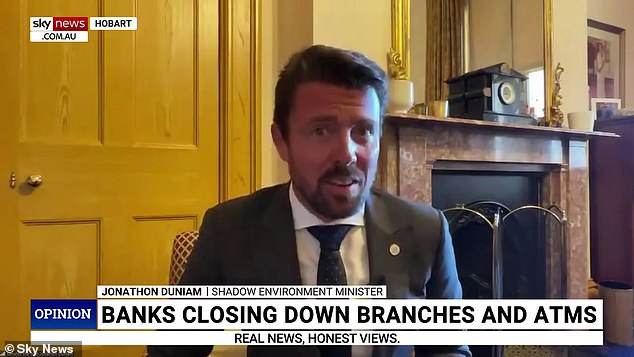Worrying Commonwealth Bank, NAB, ANZ bank trend impacting Australians
The Opposition is calling on banks to keep ATMs in regional areas after new data showed the number of ATMs in Australia has more than halved in six years.
The number of ATMs owned by banks has shrunk from 13,814 in 2017 to just 5,693, according to figures from financial watchdog the Australian Prudential Regulation Authority.
In the same time frame, branches have fallen from 5,694 to 3,588, despite banks such as Commonwealth announcing big profits, including last week’s half-year report of $5 billion, just shy of the record result in the previous six months.
Liberal Senator Jonathon Duniam told Sky News on Wednesday that banks were particularly letting regional Australians down by not at least keeping their ATMs operational.
ATMs are becoming an endangered species in Australia as banks continue to close them
“Frankly, it’s probably the cost-cutting measures on the part of the banks that I find very disappointing,” he said.
“I think these organizations that make significant profits should be required to maintain these facilities in regional communities.
“I have nothing against profits, but delivering these services to communities is critical.
‘They closed the branches. ATMs are a much cheaper alternative. Keep them especially in regional communities and large cities.’
Senator Duniam also highlighted the danger of over-reliance on electronic transactions, recalling the recent massive Optus network outage in November, which left many Eftpos machines unusable.
‘What should we do if we don’t have ATMs?’ he asked about such a scenario.

Figures from the Australian Prudential Regulation Authority show that many banks’ ATMs have been cleared
“If people don’t use cash, if stores don’t accept cash, we’re kind of stuck.”
The Tasmanian senator also noted that many older people are uncomfortable with electronic transactions.
Banks have repeatedly defended the closure of branches and ATMs, saying fewer of their customers are using these services.
At the end of 2022, cash only accounted for 13 percent of Australian consumer payments, down from 70 percent in 2007.
Last December, Reserve Bank Governor Michele Bullock even floated the idea that companies should charge fees to Australians who use cash.
Ms Bullock admitted such a move was unlikely because of the possible backlash, but said it was justified from an economic point of view.
“As economists, you want people to be confronted with prices for using certain services that reflect the costs of those services,” she said.
What’s going to happen, and what’s happening right now, is that the costs will eventually become embedded in the costs of the financial institutions that provide the services, and people won’t have to deal with them.
“I think it would be a very big challenge to get people to bear the cost of cash.”
LNP Senator Gerard Rennick, who initiated and sits on a Senate committee conducting an inquiry into bank closures, responded by saying Ms Bullock was “a way of going about” for promoting the idea.
Senator Rennick was adamant that Australians should never have to pay extra to use cash.

Liberal Senator Jonathon Duniam said it was ‘disappointing’ that banks were cutting costs by scrapping their ATMs
“Absolutely not,” he told Daily Mail Australia.
“It’s legal tender and it’s just absurd to say you have to pay fees.”
Senator Rennick accused Ms. Bullock of losing sight of what her job should be.
“She should represent the interests of the Australian people,” he said.
‘This is the problem with having a so-called independent Reserve Bank, whose focus has shifted over the years from protecting the people to protecting the banks.
‘The RBA is technically saying the banks don’t have a social license at all, and that’s not true.’
